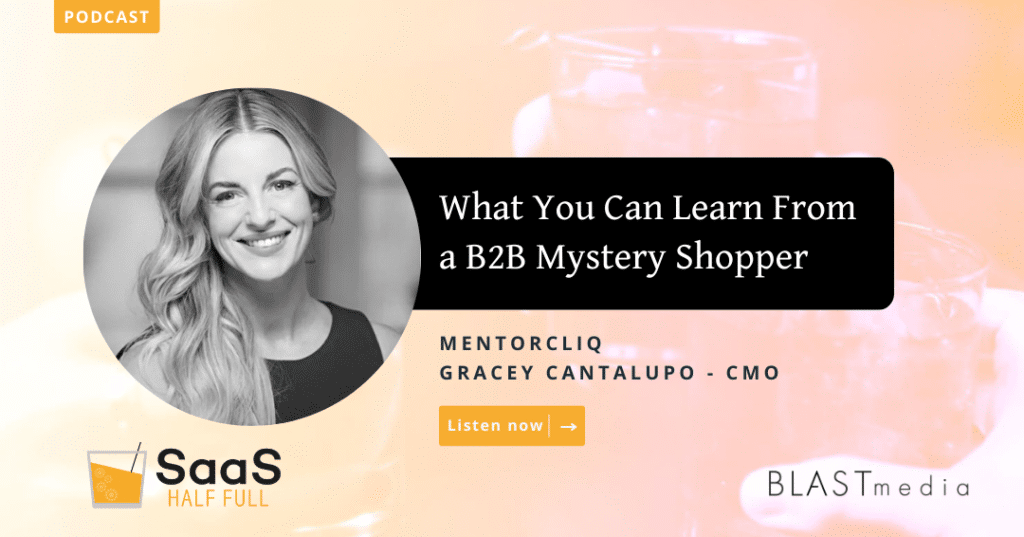Who here is guilty of building and running a marketing and sales playbook, then delaying any changes because it took so damn long to implement? Often, that paralysis comes from not knowing where to start. Gracey Cantalupo, CMO at MentorcliQ, says to begin with being a good buyer and then return to the start — a process you can complete in a couple of not-so-time-intensive steps. In this episode, listen as Gracey and host Lindsey Groepper discuss how hiring someone to walk your virtual storefront (yes, a mystery shopper!) and actually being on a software buying committee can be worth its weight in gold.
An unbiased third party will (and should!) poke holes in UX
According to Gracey, marketers should involve a fresh pair of eyes when assessing their digital presence. A third party or freelancer is likelier to identify issues because they’re new to the site’s layout and won’t get caught in a familiarity loop. (And, bonus: hiring a digital mystery shopper is relatively inexpensive.)
“You need a stranger to [find cracks in your B2B presence],” said Gracey. “They will click on something, and it will be broken, and you will be mortified — and that’s exactly what you want.” Once the mortification wears off, B2B marketers can address their site’s issues expediently, improving their web presence.
Gracey provided an example of how this process has worked at MentorcliQ. Not so long ago, she hired a freelancer to comb their website, and the freelancer discovered native videos were offline due to a codec error. Luckily, the team addressed the issue immediately and instantly improved the workability of MentorcliQ’s website.
Gracey has also used this process to advocate for something extremely exciting: a better ad budget.
“This was a few years back… paid [ads were] really great for us at the time, and we were paying the bills with the paid side of inbound, right? And I was like, ‘We can’t do this forever, and I’ve gotta prove it,’” said Gracey. “So, I actually… [made] the business case to my CEO that we need to invest in SEO because the researchers didn’t click on paid ads. They went to organic search first. So…I spent a little bit of money and got a lot more budget.”
“Buy better, sell better”
In other instances, it may be wise for marketers to act as not-so-mysterious shoppers themselves. After all, to sell like a B2B pro, marketers must first buy like a B2B pro. And when marketers put themselves in the buyer’s seat, they’re more likely to keep pace with rapidly changing consumer standards.
“We can pretend, and we can research, but you have to feel the pain, and you have to feel what it’s like to have a deadline and jump through the hoops to get these demos and make a business case internally,” said Gracey. “You need real skin in the game to feel what your buyers are feeling.”
Plus, temporarily acting as a buyer can improve sales pitches, encourage marketing innovation and promote visibility into buyer-specific challenges — such as the fact that, paradoxically, buying will often not be a buyer’s #1 priority. That’s especially true if the sales process is unnecessarily complicated or includes unclear next steps.
“[When acting as a buyer], I write ten things down every day that I will try to get done.
And [the next step in the sales funnel] would be on the list. But because… sometimes I don’t have my next actions for that, it moves to the bottom. And it keeps moving. There goes your sales time — that really extends your sales cycle if you can’t make that easier,” said Gracey.
To listen to more of Gracey’s insights, listen to Episode 343 of SaaS Half Full.

